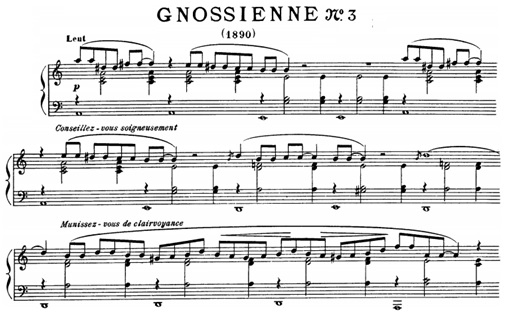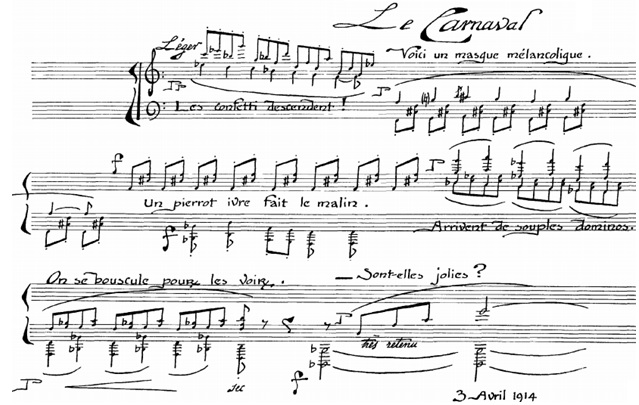That must have been something to hear! I can see how the melodic repetitiveness on all those minor chords with little metric underpinning could get you in that mindset (Satie's music does not really develop themes, yet it's not really impressionistic either - it's just totally unique).
I assume many have seen this (looks like he's done #1-3):
Kip Rosser - Gnossienne #3
Once again, here's the link to Peter's piece:
La Voix du Sphinx
And Peter's Gnossienne #3 on the Hakken Continuum for comparison here in one place:
Gnossienne #3 on Hakken Continuum
I wonder how many people get the Satie musical reference in Peter's piece (in addition to the unique title - and no one wrote pieces with more unique/strange names in the history of music than Satie). Very interesting that you picked the Gnossienne #3 as that actually sounds like part of the inspiration for Peter's piece (but only the composer can verify that). Both are chocked full of augmented seconds/minor thirds in a repetitive phrase structure that gives an ethnic feel, but Peter also injects a more Gymnopedie-like flowing melody with some very nice modal chord changes that you might hear from Satie - typically chords changing from major to minor or chords moving by second or third but not in a traditional key - like Peter's opening progression (F#m-Eb-F#m-Eb-Ebm-Bbm-dm-Bbm). The Gnossienne #3 doesn't shift around quite so much tonally (am-em-am-em-dm-E-dm-am-em-bm) but I defintely can hear what Peter is trying to do here.
As for your comment on the rhythm, I totally understand that one. Satie's music is often devoid of meter (at least notated meter). Very often the sound just kind of flows like water in an unending and often totally repetitive motion. Here's what Elmo7#9 is talking about.
The beginning of Gnossienne #3 (public domain score):
No meter indication but the bigger issue is that most of his piano music has no barlines. You might imply it from the whole notes and pattern in the bass clef here, but I can see how it could create issues arranged as a group piece. And some of his music really has little hint of meter at all.

This interesting example is from one of his later set of 21 very short pieces "Sports et Divertissements" - here's a fascimile of his autograph of #10 ("La Carnaval") - it's the entire piece. He seems to have had very nice penmanship as well. But try easily inferring a meter from this .

His music was often criticized for its lack of form. In 1903 he wrote "Three Pieces in the Shape of a Pear". When he was asked why that title, he said something like "Well if they are in the shape of a pear how they can be without form?". Gotta love that guy!
Not sure but there was a popular poetic movement in France called "Vers libre" in the late 1800s early 1900s that stressed free meter - perhaps that had some influence on Satie - either way very forward thinking and any way you cut it, Satie's music is totally unique (except perhaps some of his songs that get pretty tuneful and are more traditional - after all he was a cabaret pianist to help pay the rent and likely some of that rubbed off in his songs). Maybe Peter will sing us one sometime and play along a bit on "La boîte électronique".
This one could be nice.
Je Te Veux




